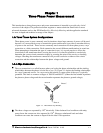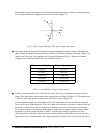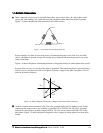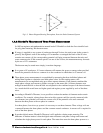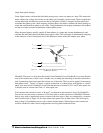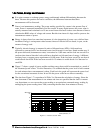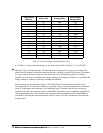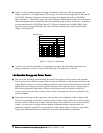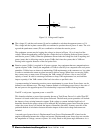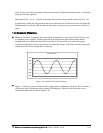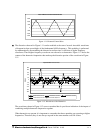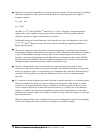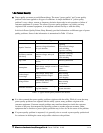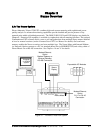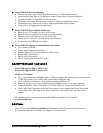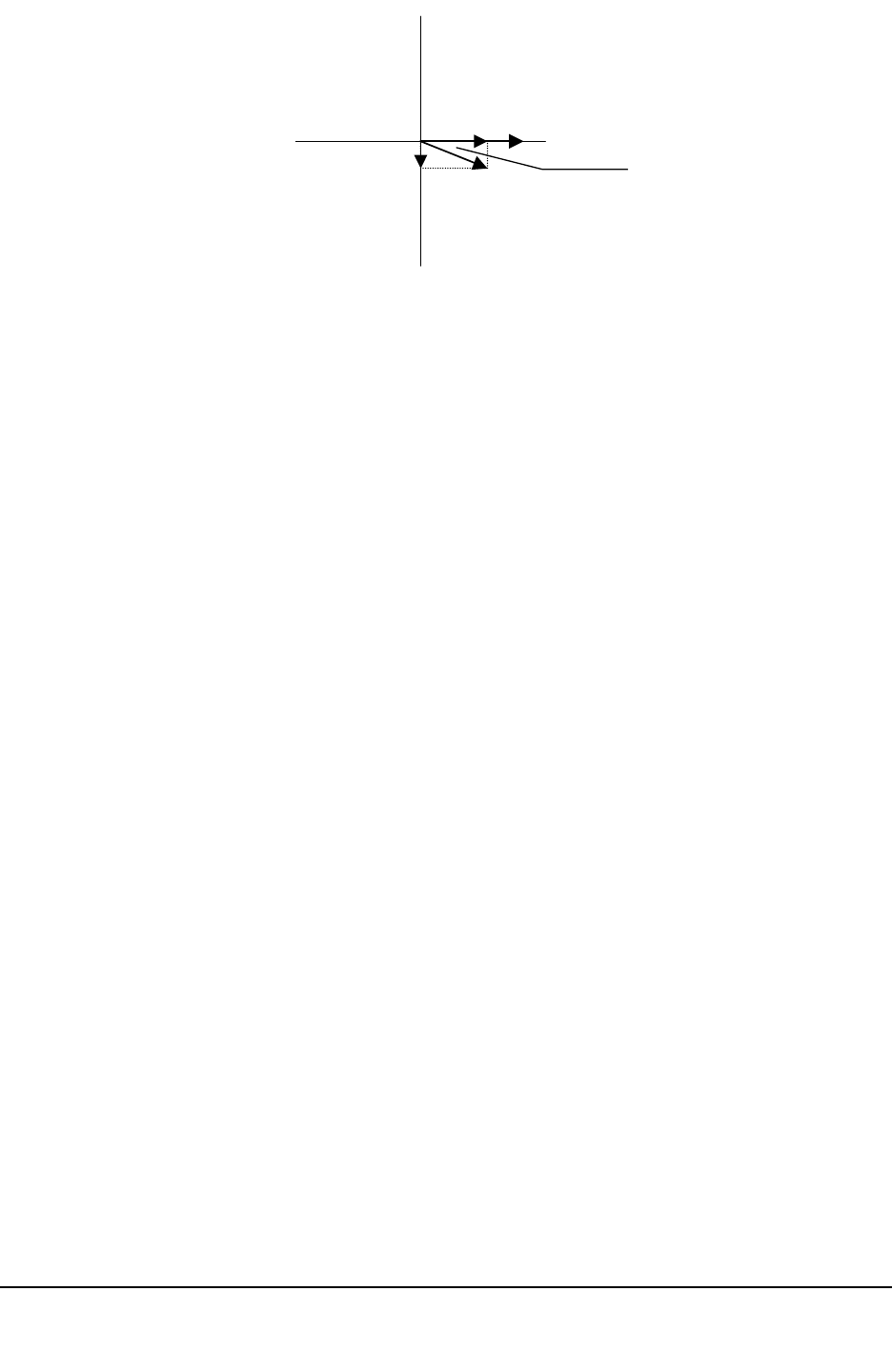
Q
The voltage (V) and the total current (I) can be combined to calculate the apparent power or VA.
The voltage and the in-phase current (IR) are combined to produce the real power or watts. The volt-
age and the quadrature current (IX) are combined to calculate the reactive power.
The quadrature current may be lagging the voltage (as shown in Figure 1.9) or it may lead the
voltage. When the quadrature current lags the voltage the load is requiring both real power (watts)
and reactive power (VARs). When the quadrature current leads the voltage the load is requiring real
power (watts) but is delivering reactive power (VARs) back into the system; that is VARs are
flowing in the opposite direction of the real power flow.
Q
Reactive power (VARs) is required in all power systems. Any equipment that uses magnetization to
operate requires VARs. Usually the magnitude of VARs is relatively low compared to the real power
quantities. Utilities have an interest in maintaining VAR requirements at the customer to a low value
in order to maximize the return on plant invested to deliver energy. When lines are carrying VARs,
they cannot carry as many watts. So keeping the VAR content low allows a line to carry its full
capacity of watts. In order to encourage customers to keep VAR requirements low, most utilities
impose a penalty if the VAR content of the load rises above a specified value.
A common method of measuring reactive power requirements is power factor. Power factor can be
defined in two different ways. The more common method of calculating power factor is the ratio of
the real power to the apparent power. This relationship is expressed in the following formula:
Total PF = real power / apparent power = watts/VA
This formula calculates a power factor quantity known as Total Power Factor. It is called Total PF
because it is based on the ratios of the power delivered. The delivered power quantities will include
the impacts of any existing harmonic content. If the voltage or current includes high levels of
harmonic distortion the power values will be affected. By calculating power factor from the power
values, the power factor will include the impact of harmonic distortion. In many cases this is the
preferred method of calculation because the entire impact of the actual voltage and current are
included.
A second type of power factor is Displacement Power Factor. Displacement PF is based on the
angular relationship between the voltage and current. Displacement power factor does not consider
the magnitudes of voltage, current or power. It is solely based on the phase angle differences. As a
Electro Industries/GaugeTech
Doc # E107706 V1.25 1-9
V
I
I
R
I
X
Figure 1.9: Voltage and Complex
Angle θ



